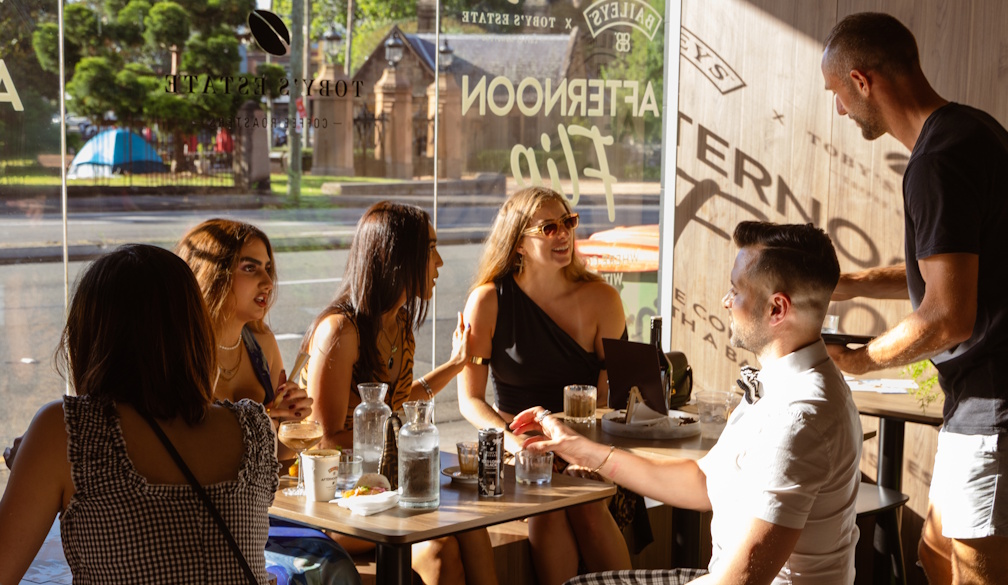Tasting Australia welcomes Journey Beyond as new presenting partner
- Written by The Times

One of the country’s longest running food and beverage festivals, Tasting Australia has announced Journey Beyond as the festival’s new presenting partner for 2025 and beyond.
The partnership announcement comes as the first event of the 2025 program is revealed. Tasting Australia by Train, operated by Journey Beyond will return to the festival program in 2025 after a sellout inaugural event in 2024.
As Australia's largest experiential tourism group, Journey Beyond operates some of the country’s most iconic travel experiences, featuring 16 brands nationwide, including the renowned 95-year-old rail experience, The Ghan.
At the heart of all Journey Beyond experiences is the commitment to take guests further and create special moments for travellers, making it an ideal partner for Tasting Australia.
The partnership marks an exciting new chapter for the festival, enhancing the celebration of South Australia’s exceptional food, drink and travel experiences.
The 2025 iteration of Tasting Australia by Train is a collaboration between members of the Ayubi family from Adelaide restaurant Parwana and Duncan Welgemoed from Africola for Tasting Australia by Train: Africola X Parwana. The 10-hour gastronomic journey from Melbourne – Adelaide takes place onboard The Ghan’s dining and lounge carriages, travelling with the Overland and is the first event to be announced for the 2025 festival.
The 2025 festival program will be on sale from Thursday 5 December at tastingaustralia.com.au. Tasting Australia presented by Journey Beyond runs for 10 days from Friday 2 – Sunday 11 May 2025 across Adelaide and regional South Australia.
Minister for Tourism Zoe Bettison said.
Tasting Australia has become a key fixture on our state’s events calendar, and we’re thrilled to welcome Journey Beyond as the presenting partner for this iconic festival. This partnership brings together South Australia’s finest food experiences with Australia’s leading experiential travel company, Journey Beyond and its exceptional travel offerings, creating new opportunities to showcase our state’s unique food culture to a wider audience.
Karena Armstrong, Tasting Australia Festival Director, said
Journey Beyond’s commitment to offering extraordinary travel experiences aligns perfectly with the ethos of Tasting Australia. Together, we will create unforgettable moments for festival-goers, showcasing the very best of our state’s food and drink while opening up new ways for visitors to experience South Australia. This partnership will add a whole new dimension to the festival and we can’t wait to share more.
Chris Tallent Chief Executive Officer at Journey Beyond said
Just like Tasting Australia, Journey Beyond plays an important role in the state’s visitor economy with over 85,000 guests travelling to South Australia annually onboard our iconic rail journeys The Ghan, Great Southern, Indian Pacific and Overland. We are delighted to partner with Tasting Australia and provide a platform to showcase Journey Beyond's incredible experiential travel offerings across our magnificent state and country.
Journey Beyond naturally aligns with Tasting Australia as our commitment to exceptional food and wine experiences elevate the travel journey. On board trains like The Ghan, Indian Pacific, and Great Southern, guests are treated to multi-course meals crafted by talented onboard chefs. These culinary offerings celebrate the rich diversity of Australia’s seasonal regional produce, creating a unique dining experience that highlights local flavours and ingredients specific to the region the trains traverse.
Partnering with Tasting Australia allows Journey Beyond to showcase these extraordinary culinary journeys, celebrating the intersection of travel and gastronomy. Together, they embody the essence of Australian hospitality, bringing together food lovers and travellers in an unforgettable exploration of South Australia.
Justine Lally Executive General Manager of Marketing and Product at Journey Beyond said,
Tasting Australia by Train: the Melbourne-Adelaide day-trip introduced for the first time last year sold out and we are thrilled to provide this experience again for guests in 2025. A culinary journey experience with a Ghan lounge carriage, dining carriage and an Overland seating carriage, guests experience the romance of rail, world-class food and wine that our journeys are renowned for, it’s a Ghan experience, and an Overland journey interstate adventure.






















